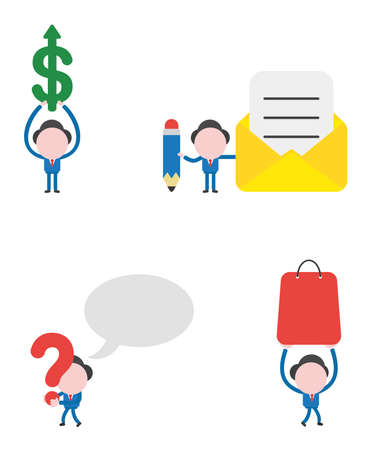1. Understanding the U.S. Work Culture
When it comes to dressing for work in the United States, it’s important to understand more than just what’s written in your company handbook. The U.S. workplace culture values not only professionalism but also authenticity and adaptability, which can vary across industries like tech, finance, and creative fields. Here’s an overview to help you navigate the unspoken expectations:
Workplace Expectations
American companies often expect employees to dress in a way that matches their specific industry standards, but they also appreciate when individuals express personal style appropriately. While some offices might have a written dress code, much of what is expected goes unsaid and is learned by observing others or asking colleagues.
Unwritten Dress Code Rules
| Industry | Typical Dress Code | Common Unwritten Rules |
|---|---|---|
| Tech | Casual or Smart Casual | Avoid overdressing; branded t-shirts and jeans are common, but neatness matters |
| Finance | Business Formal | Suits are standard; conservative colors preferred; appearance should be polished at all times |
| Creative | Business Casual/Trendy Casual | Express individuality through accessories or unique pieces; creativity is valued but must still look put-together |
The Importance of Aligning with Company Values
Dressing in line with your companys values shows that you understand and respect the organization’s culture. For example, if a tech startup promotes innovation and flexibility, showing up in a suit every day might make you seem out of touch. On the other hand, in finance, dressing too casually could signal a lack of seriousness. Always take cues from leadership and peers, and remember that first impressions matter in the American workplace.
2. Dress Codes in Tech: From Startup Casual to Big Tech Norms
Tech companies in the United States are famous for their relaxed approach to dress codes, but what you wear can still say a lot about you and your understanding of the company culture. Whether you’re joining a new startup or a major tech giant, it’s important to know what’s expected when it comes to work attire.
Startup Casual: Comfort Comes First
Startups often pride themselves on having a laid-back atmosphere. The focus is usually on innovation and teamwork rather than strict dress codes. You’ll often see employees wearing jeans, t-shirts, hoodies, and sneakers. Here’s a quick overview:
| Item | Common at Startups? | Notes |
|---|---|---|
| T-Shirts & Hoodies | Yes | Company-branded shirts are popular |
| Jeans | Yes | Avoid ripped or overly distressed styles |
| Sneakers | Yes | Comfort is key; clean shoes are appreciated |
| Business Attire (Suits, Ties) | No | Might seem out of place unless for client meetings |
Big Tech Companies: Smart Casual Rules
Larger tech companies like Google, Microsoft, or Apple tend to have a “smart casual” approach. While they maintain a relaxed environment, there’s more variety and sometimes subtle expectations based on your role or department. For example, engineers may dress casually while those in sales or client-facing roles might opt for business casual looks.
| Role/Department | Typical Attire | Tips |
|---|---|---|
| Engineering/Development | T-shirts, polos, jeans, sneakers | Add a light jacket or sweater for meetings |
| Product Management/Marketing | Polo shirts, button-downs, chinos, loafers or flats | Dress up slightly for presentations or events |
| Client-Facing/Sales Roles | Button-downs, blouses, slacks or skirts, closed-toe shoes | A blazer is good for important meetings or conferences |
The Evolution of Tech Dress Codes in the U.S.
The American tech industry has influenced office fashion across many other fields by prioritizing comfort and practicality. However, some companies are starting to bring back elements of business casual to create a more professional environment—especially as remote work becomes less common and more employees return to offices.
Quick Tips for Dressing in U.S. Tech Environments:
- If you’re unsure what to wear on your first day, aim for smart casual—it’s always safer to be slightly overdressed than underdressed.
- Pay attention to how managers and team leaders dress; they often set the tone.
- If you have an important meeting with clients or executives, consider dressing up one level from your usual outfit.

3. Dressing for Success in Finance: Embracing Professionalism
Understanding Traditional Business Attire in U.S. Financial Institutions
The finance industry in the United States has long been known for its conservative dress code. Whether you work on Wall Street, in corporate banking, or at a local credit union, professional attire is key to projecting credibility and trust. The classic look typically includes tailored suits, crisp dress shirts, polished shoes, and minimal accessories.
| Item | Men | Women |
|---|---|---|
| Suit | Navy, black, or gray; well-fitted | Pant or skirt suit in neutral colors |
| Shirt/Blouse | White or light blue dress shirt | Conservative blouse or button-down shirt |
| Shoes | Black or brown leather dress shoes | Closed-toe flats or heels (2-3 inches max) |
| Accessories | Tie, belt, watch; subtle jewelry | Minimal jewelry; simple handbag or tote |
| Grooming | Neatly trimmed hair and facial hair | Professional hairstyle; natural makeup |
Modern Updates to Classic Looks in Finance
While tradition still plays a strong role in finance, many firms are gradually adopting more modern takes on business attire. You might see slimmer cuts, stylish yet understated patterns, and smart-casual Fridays where blazers can replace full suits and loafers take the place of oxfords. However, even with these updates, looking sharp and put-together remains essential.
Examples of Modern Finance Attire:
- A tailored navy suit paired with a patterned tie and pocket square for men.
- A sleek pantsuit with a silk blouse and statement necklace for women.
- Crisp chinos with a blazer and leather loafers on casual Fridays.
- Knit ties, subtle prints, and slim-fit dress shirts as stylish alternatives to more traditional options.
Tips for Projecting Confidence and Credibility in Finance Roles
- Fit matters: Invest in tailoring to ensure your clothes fit perfectly.
- Choose quality over quantity: A few high-quality pieces will serve you better than a closet full of ill-fitting attire.
- Keep it clean and polished: Make sure your clothes are pressed, shoes are shined, and accessories are tasteful.
- Dress for your client or audience: If meeting with clients from other industries or cultures, adjust your look accordingly while maintaining professionalism.
- Be mindful of company culture: Always observe what senior leaders wear and follow their lead for special meetings or events.
4. Creative Roles: Expressing Individuality While Staying Professional
Working in a creative field in the U.S.—like advertising, design, media, or entertainment—means you can often show off more of your personality through your clothing. However, there’s still an expectation to look put-together and professional, especially when meeting clients or working with other departments. Here’s how to strike that balance between creativity and professionalism:
Finding the Sweet Spot: Creative vs. Professional
Creative workplaces encourage self-expression, so you’ll see more color, bold patterns, and unique accessories than in tech or finance offices. But it’s important not to cross into looking too casual or sloppy. Aim for an outfit that feels like “you,” but also says you’re ready to get down to business.
Typical Attire in Creative Fields
| Item | Common Examples | Tips |
|---|---|---|
| Tops | Patterned blouses, graphic tees under blazers, casual button-downs | Add a statement necklace or scarf for flair; avoid worn-out t-shirts |
| Pants/Bottoms | Dark jeans, wide-leg trousers, tailored pants, midi skirts | Skip ripped jeans unless your office is very laid-back |
| Shoes | Sneakers (clean & stylish), loafers, ankle boots, flats | Avoid flip-flops; opt for shoes that are both fun and neat |
| Accessories | Bold glasses, unique jewelry, hats (if allowed) | Let accessories reflect your style but keep them work-appropriate |
| Outerwear | Colorful blazers, patterned cardigans, denim jackets (in relaxed offices) | Layering adds interest and shows personality |
How Personal Style Fits In
Your personal style is an asset in creative industries—it sets you apart and can even inspire others. Try mixing classic staples with trendier pieces or items that highlight your artistic side. For example, pair a traditional blazer with a vintage band tee or funky shoes. Just remember: even if everyone dresses creatively, looking polished is key during client meetings or presentations.
In short, dressing for creative roles in the U.S. means combining professionalism with individuality. Use your wardrobe as a canvas to express yourself while staying mindful of your workplace’s culture and expectations.
5. Regional Nuances and Insider Tips
Understanding U.S. Regional Style Differences
The United States is huge, and workplace dress codes often reflect local culture and climate. Knowing these differences can help you fit in better and feel more comfortable at work.
| Region | Common Workplace Styles | Insider Tip |
|---|---|---|
| West Coast (e.g., California, Seattle) | Very casual in tech; jeans, sneakers, and t-shirts are common even in the office. Creative industries also favor relaxed styles. | Add a smart jacket or clean sneakers to keep things neat without being overdressed. |
| Northeast (e.g., New York, Boston) | Finance roles expect suits or business formal. Tech is more relaxed but still leans business casual. Creative jobs may allow trendier outfits. | For interviews, always err on the side of dressier—especially in finance. Neat grooming counts! |
| South (e.g., Texas, Georgia) | Business casual is standard, but it’s common to see more color and patterns. Some places prefer a polished look. | Don’t be afraid to add personality with accessories, but keep it professional for first meetings. |
| Midwest (e.g., Chicago, Minnesota) | A balance between formal and casual—think polos, khakis, sweaters, or simple dresses. Finance skews more formal. | Dressing neatly is always appreciated. Layering helps with changing weather! |
Adapting for Remote Work
If you’re working remotely or interviewing over video calls, your look should still match your industry’s expectations but with comfort in mind:
- Tech: A clean t-shirt or hoodie works for daily meetings; for interviews, try a casual button-down or simple blouse.
- Finance: A collared shirt or blazer looks polished on camera—even if you’re wearing sweatpants below the desk!
- Creative: Show a bit of your style with colors or patterns, but keep it tidy and distraction-free.
Making a Great First Impression Anywhere
No matter your location or role, here are some easy ways to impress from day one:
- Be neat: Clean clothes and good grooming go a long way.
- Check the company vibe: Look at social media or ask HR about dress codes before your first day or interview.
- Add one standout item: Whether it’s a watch, shoes, or a fun tie, one stylish accessory can make you memorable without overdoing it.
- Comfort matters: If you feel confident in what you wear, it will show!
Your Takeaway:
Dressing right means balancing industry standards with regional trends and your own style. Pay attention to details—and don’t be afraid to ask questions if you’re unsure!

